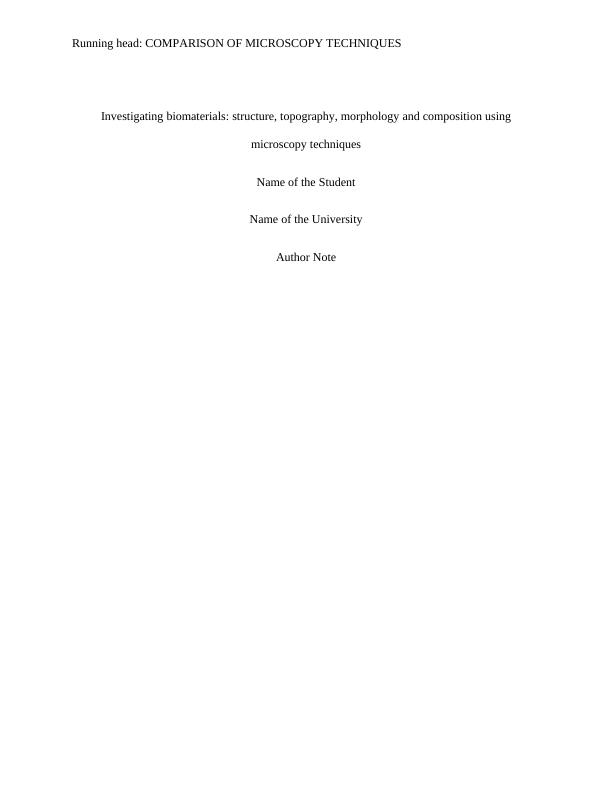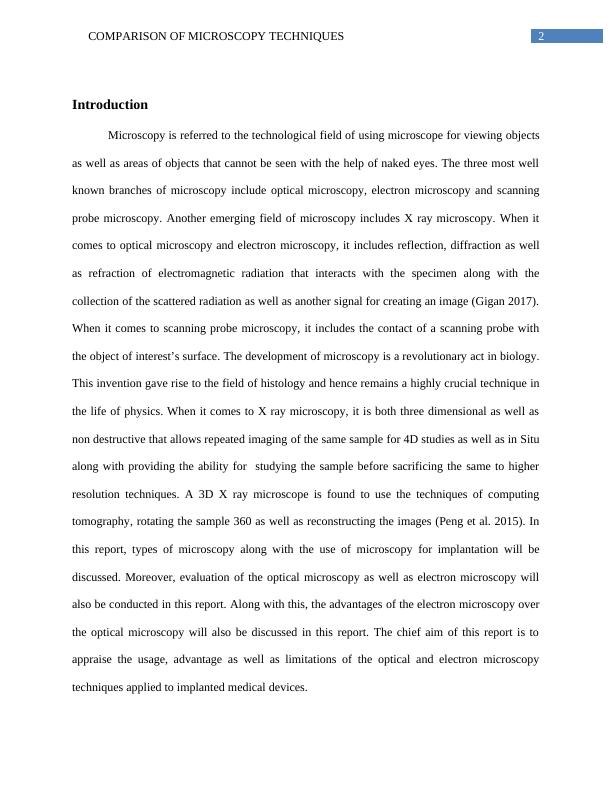Comparison of Microscopy Techniques
16 Pages3493 Words249 Views
Added on 2023-04-12
About This Document
This report discusses the different types of microscopy techniques, including optical microscopy and electron microscopy, and their significance in biomedical research and manufacturing. It explores the uses, advantages, and limitations of each technique and their application in implantation and analysis of medical devices. The report aims to evaluate the usage, advantages, and limitations of optical and electron microscopy techniques applied to implanted medical devices.
Comparison of Microscopy Techniques
Added on 2023-04-12
ShareRelated Documents
End of preview
Want to access all the pages? Upload your documents or become a member.
Assignment on Lab Report - 1
|7
|1422
|19
Electron Microscopy Of Subcellular Structure
|9
|2408
|169
SEM Image Analyzation 2022
|2
|393
|25
ONLINE DISUSSION.
|3
|387
|309
Introduction to Biological Macromolecules
|12
|2003
|241
Microscopy and Scientific Thinking
|5
|914
|66




